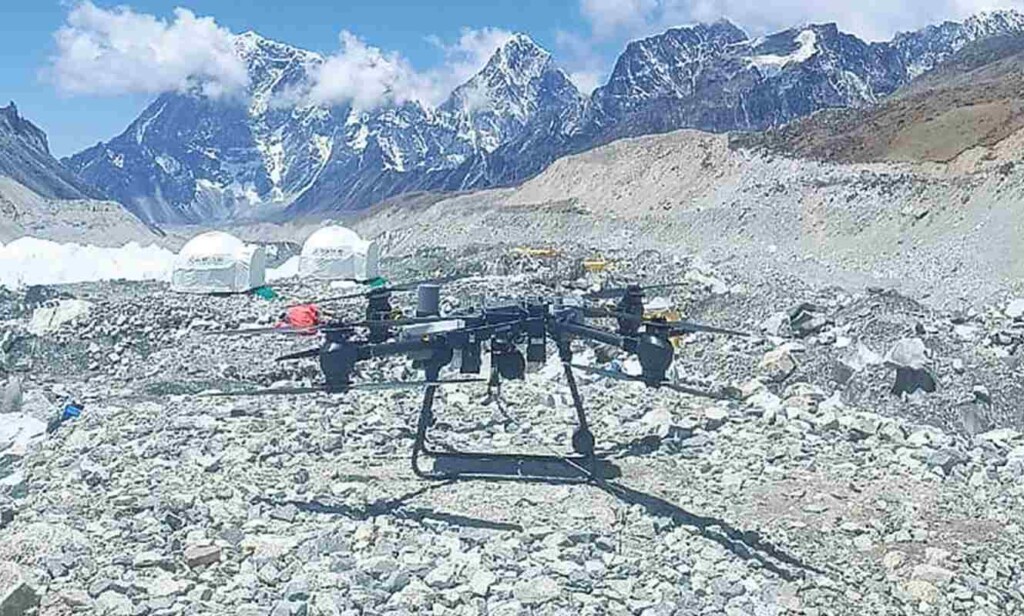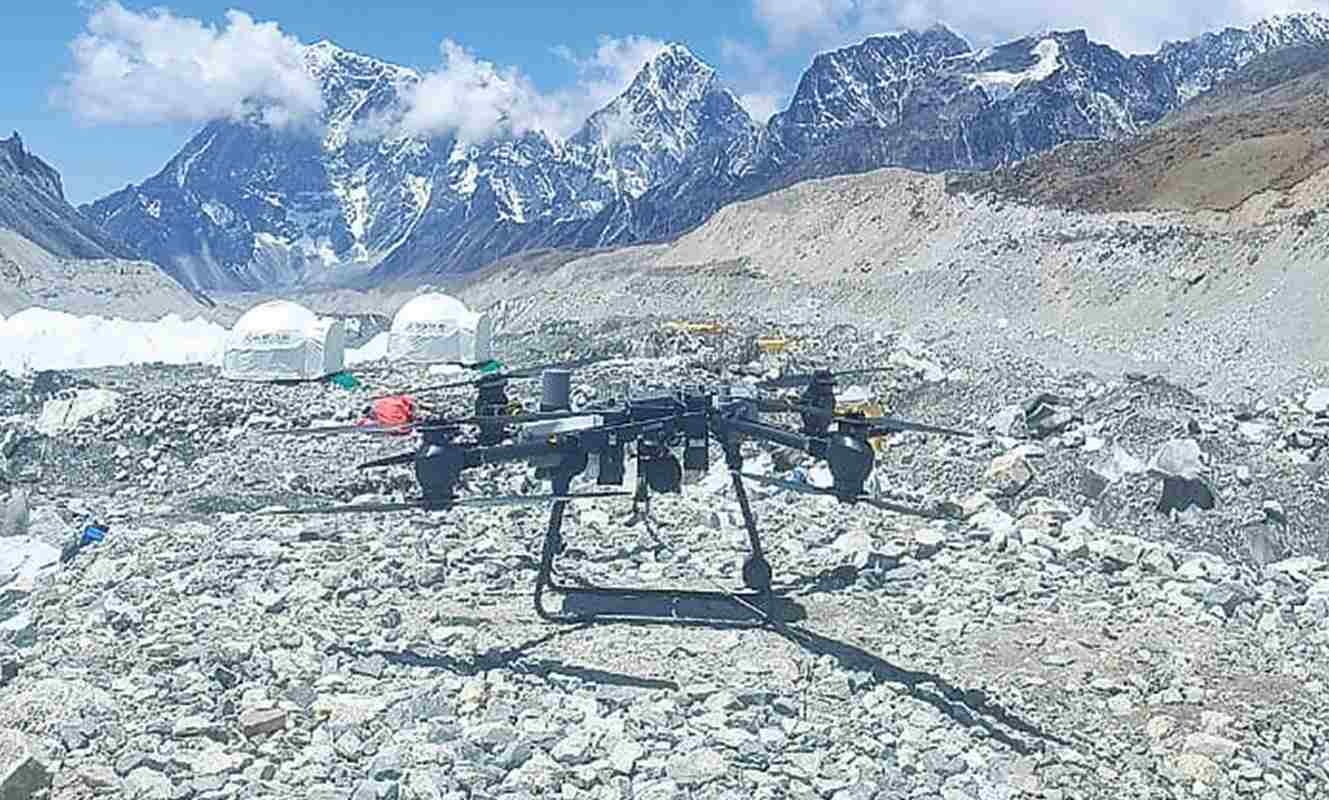
Buddhist nation Nepal and a drone manufacturer in majority Buddhist China, have signed an agreement to supply Mount Everest’s Buddhist authorities with heavy lift drones that will help clear trash off Everest’s holy slopes.
Dealing with trash on the world’s highest mountain is a complex and multifaceted operation, but the drones, piloted by the same Sherpa porters who for decades have been clearing trash on foot, will allow them to work in the most dangerous areas without risk to their lives.
Da Jiang Innovations, the largest drone manufacturer in China, will supply the equipment to a drone operator, who signed a memorandum of understanding between the rural municipality where Everest is located, and the Sagarmatha Pollution Control Committee (SPCC) for the use of drones in cleaning the sacred mountain.
“After a successful test in April, we plan to use drones commercially in the Everest region,” said Jagat Bhusal, chief administration officer of the rural municipality Khumbu Pasang Lhamu.
The SPCC works to ensure as much pollution of trash and dead bodies as possible is removed from the slopes every year. Along with hiring Sherpas to pack out trash from higher altitudes, and using helicopters to recover bodies, every climber who plans to reach Everest Base Camp must return back down with 8 kilograms (17.2 pounds) of garbage or lose a $4,000 deposit put down to ensure compliance.
If the climber goes to Camp I, or Camp II higher up the slopes, they must return with lower and lower weights of trash to ensure they aren’t overburdened in the low oxygen.
Reporting from Mr. Sangam Prasain at Kathmandu Post details the dangers of crossing the Khumbu Icefall during the first part of the climb from Everest Base Camp to Camp I. A river of ice 0.6 miles long, it’s one of the most dangerous features on Everest, as the rays of the Sun cause the ice to melt, shift, become unstable, and trigger avalanches, or crevasses to open up.
According to statistics cited by Prasain, from 1953 to 2023, nearly 50 Sherpa porters lost their lives on the Khumbu Icefall, which is typically crossed during the early morning or late evening after the ice has cooled back down.
NEWS FROM THE ROOF OF THE WORLD: Sherpa Convinces Climber to Let Him Make Rare ‘Death Zone’ Rescue on Mt. Everest
“Yes, there are concerns that the machines may actually cut jobs. But our sole purpose is to reduce potential deaths in the Khumbu Icefall, the danger zone,” said Bhusal. “We will train Sherpas, as drone operators cannot handle tasks at the higher camps. In the future, all work will be done by Sherpas.”
Based on trial data, the heavy lift drones could carry 30 kg, or over 60 pounds of material from Camp I, but as the altitude increased, the load capacity reduced, down to just 18 kg at Camp II at 6,400 meters above sea level.
NEWS FROM THE ROOF OF THE WORLD: Sherpas Laughing in the Face of Death While Saving Partner Who Fell 200 Feet into an Everest Crevasse
As warmer summers melt snow and ice on Everest, garbage and bodies from decades past are uncovered and risk polluting meltwater which feeds streams and rivers all over the valleys around the mountain.
The SPCC is conscientious of this, and is working hard to try and remove these potential contaminants from one of the holiest mountains in Buddhism.
SHARE This Truly GOOD Use Of An Often Unpleasent Technology…




















